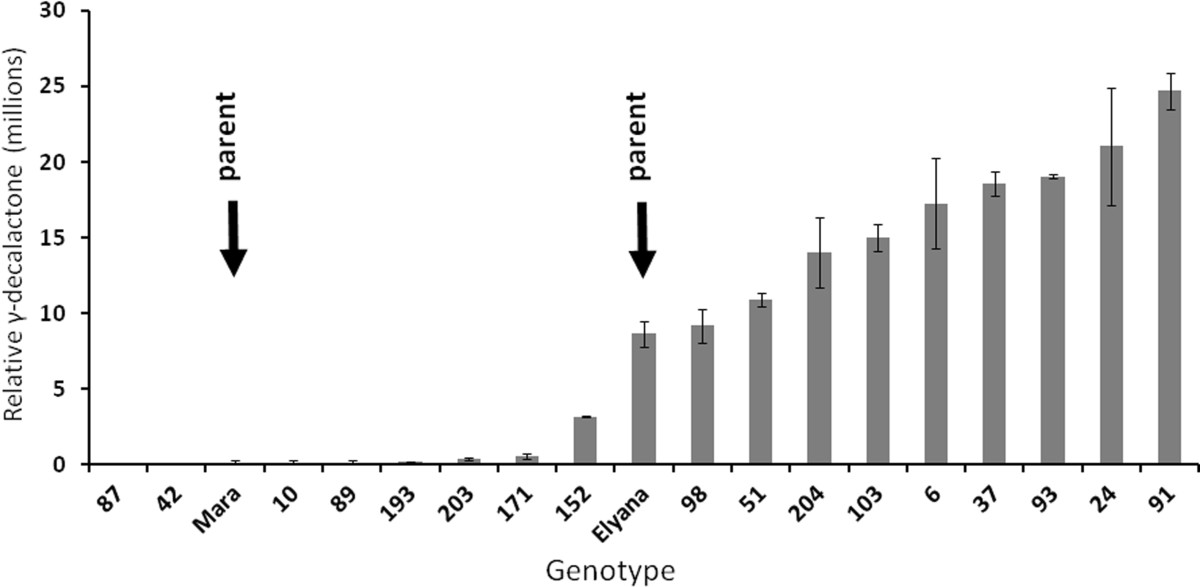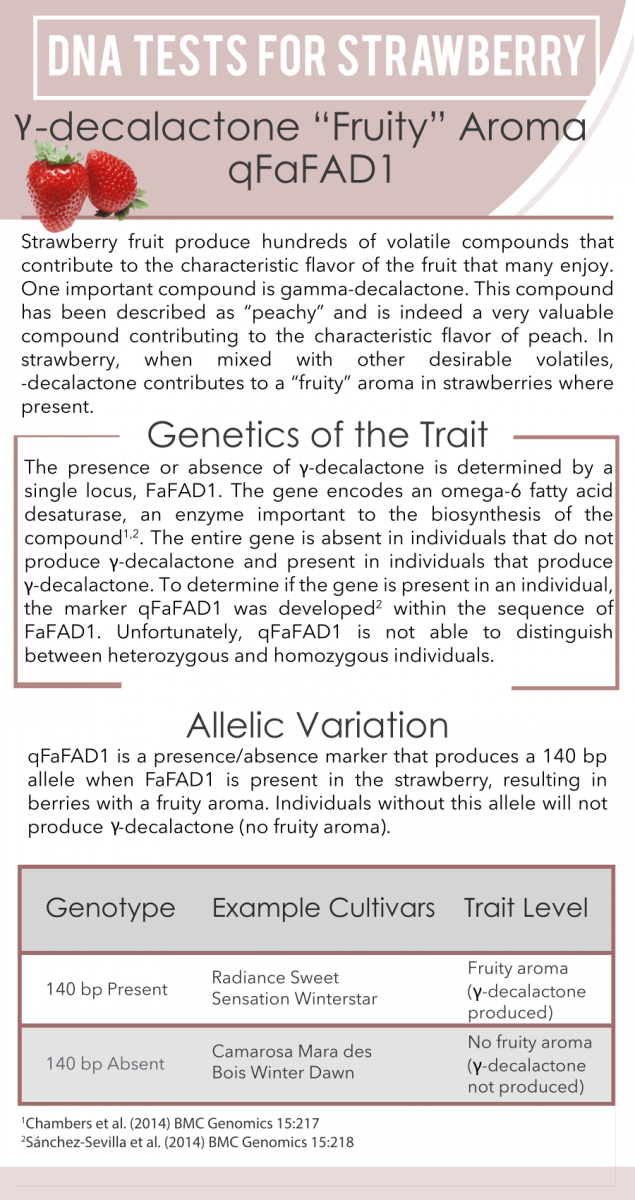qFaFAD1: Strawberry γ-decalactone
Strawberry fruit produce hundreds of volatile compounds that contribute to the characteristic flavor of the fruit. One important compound is γ-decalactone. This compound has been described as “peachy” and is indeed a very valuble compound contributing to the characteristic flavor of peach. In strawberry, when mixed with other desirable volatiles, γ-decalactone contributes to a “fruity” aroma in strawberries where present.
Genetics
The presence or absence of γ-decalactone is determined by a single locus, FaFAD1. The gene encodes an omega-6 fatty acid desaturase, an enzyme important to the biosynthesis of the compound1,2. The entire gene is absent in individuals that do not produce γ-decalactone and present in individuals that produce γ-decalactone . To determine if the gene is present in an individual, the marker qFaFAD1 was developed2 within the sequence of FaFAD1. Unfortunately, qFaFAD1 is not able to distinguish between heterozygous and homozygous individuals.
Allelic State of Example Cultivars
Alleles Available
qFaFAD1 is a presence/absence marker that produces a 140 bp allele when FaFAD1 is present in the strawberry, resulting in berries with a fruity aroma. Individuals without this allele will not produce γ-decalactone (no fruity aroma).
Technial Details
qFaFAD1 is a PCR-based test consisting of two primers that can be analyzed by agarose gel electrophoresis. This test has been successfully combined with the FaOMT-SI/NO test which produces alleles at 417 bp and 448 bp.
| Cultivar | Genotype | Trait Level |
|---|---|---|
| Festival | absent | non-producer |
| Sweet Sensation | present | y-decalactone producer |
| Monterey | absent | non-producer |
| Portola | absent | non-producer |
| Radiance | present | y-decalactone producer |
| Sweet Charlie | present | y-decalactone producer |
| Elyana | present | y-decalactone producer |
| Camarosa | absent | non-producer |
| Winterstar | present | y-decalactone producer |
| Winter Dawn | absent | non-producer |
| Mara Des Bois | absent | non-producer |
Predictive Capacity
qFaFAD1 is 100% accurate at detecting the presence or absence of FaFAD1 because it was developed from the gene controlling the trait. The presence of the gene in a strawberry individual is usually associated with the presence of the fruity aroma. However, other genetic and environmental factors can influence the amount of γ-decalactone present in berries.
When to Assay
The qFaFAD1 test is excellent for choosing parents with desired flavor profile. It can also be used at any stage in the breeding program.
Technical Details
qFaFAD1 is a PCR-based test consisting of two primers that can be analyzed by agarose gel electrophoresis. This test has been successfully combined with the FaOMT-SI/NO test which produces alleles at 417 bp and 448 bp.

Gamma-decalactone production in a selection of progeny from the ‘Elyana’ (y-decalactone producer) x ‘Mara des Bois’ (non-producer) cross. Figure from Chambers et al (2014), DOI: 10.1186/1471-2164-15-217.

